A river in the desert: Fly-fishing Central Oregon's Crooked River
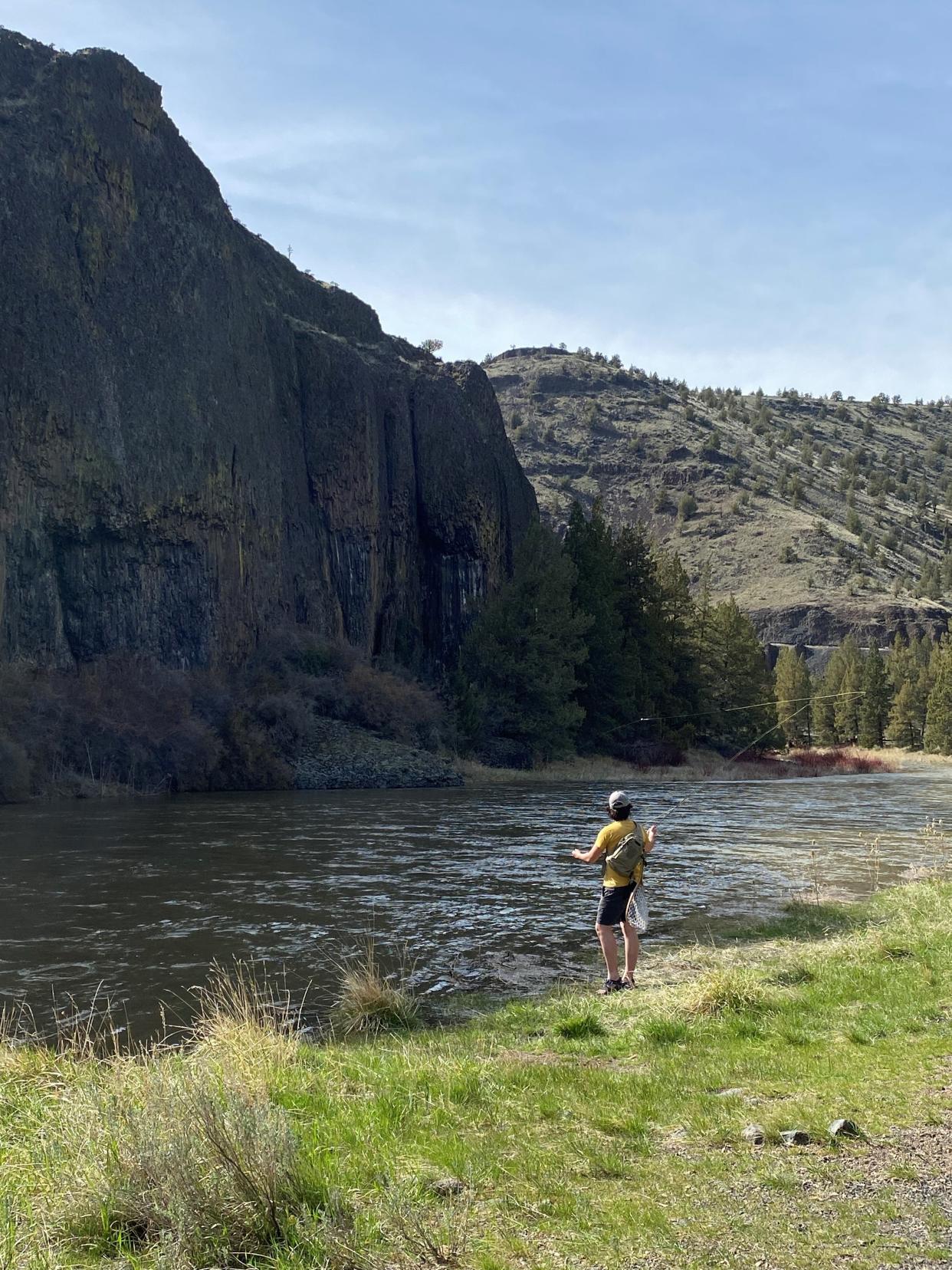
There's something special about fly-fishing the Crooked River.
Surrounded by an arid, Mars-like landscape straight out of a spaghetti western, you stand knee-deep in an ice cold, frigid oasis. The sharp-edged, rocky canyon seems ancient, unforgiving and unsuitable for life. But below the water's surface, it's another planet, an ecosystem so vibrant and strong it boasts some of the most abundant populations of wild fish in a state that is known for them.
This often-overlooked desert trout stream is only three hours from the Willamette Valley. While it faces many modern-day challenges like drought, rising temperatures, and algae blooms, the Crooked can be a fly fisher’s paradise if you know where to be and when to be there.
"When the conditions are right, there are probably not a lot of other rivers in Oregon where you can do what you can do at the Crooked River," said Jeff Perin, owner of the Fly Fisher's Place in Sisters.
Redbands and whities
The Crooked is home to numerous fish species, but the river’s main fly-fishing attraction is the prized Columbia redband trout, colloquially called redsides. Redbands are one of three primary subspecies of rainbow trout, and are native to many rivers in Oregon, Washington, Idaho, Nevada, and California.
Like many species, their numbers aren’t what they used to be. They currently occupy 42% of their historical range, according to the Western Native Trout Initiative. Lucky for us, portions of the Crooked remain ideal habitat for these fish.
It’s more than bright, beautiful colors that make redsides unique. Unlike most salmonids, they’ve adapted to living in desert streams.
“Redbands have evolved for eons in this environment,” Perin said. “They’re really well adapted to the waters that are here.”
Throughout their evolution, redbands have survived ice ages, droughts, and other weather extremes. On the Crooked, these fish are well-equipped to deal with the drought, low water levels and temperature issues that face the watershed.
Redbands are typically smaller than other trout but can grow up to 12-20 inches. Given the number of fish and extent of natural competition, Perin said Crooked River redbands are generally smaller, spanning from six to 14 inches on average.
The Crooked is also known for a robust population of the commonly misunderstood mountain whitefish. Whitefish are abundant in many Oregon rivers and their ecological benefits are many. They provide an important wintertime food source for native trout and are essential indicators of a healthy ecosystem.
“They’re a native species of fish, they evolved here, and they belong here just like the redbands and the bull trout,” Perin said. “They’re a good indicator of cold and clean water. They don’t do well in places that don’t have cold and clean water.”
“I think we’re really lucky to have fish like whitefish here,” he said. “The way they take the fly, the way they fight, and the numbers they produce in terms of population can make them a really active and catchable fish.”
Crooked River fish population monitoring conducted by the Oregon Department of Fish and Wildlife in June 2022 found an estimated 2,083 redbands per mile, and a whopping 6,950 whitefish per mile, numbers that hold up with the most prolific blue ribbon trout streams in the country.
While these numbers fluctuate significantly each year due to water levels and other factors, the 2022 numbers put the Crooked in the company of several more famous streams, including the big-name Madison River in Montana and the Henry's Fork of Idaho.
Redband trout are a catch-and-release only on the Crooked, but there is no bag limit for whitefish, which can make great table fare when smoked, pan-fried or baked.
More: Whitefish: This Oregon 'trash' fish is ecologically important and downright delicious
An enhanced fishery
The 10-mile tailwater beneath the Arthur Bowman Dam is the most fishable stretch of the river. The area features unmatched bank access, with more pull offs than you could ever fish in a day, and numerous campgrounds and day use areas.
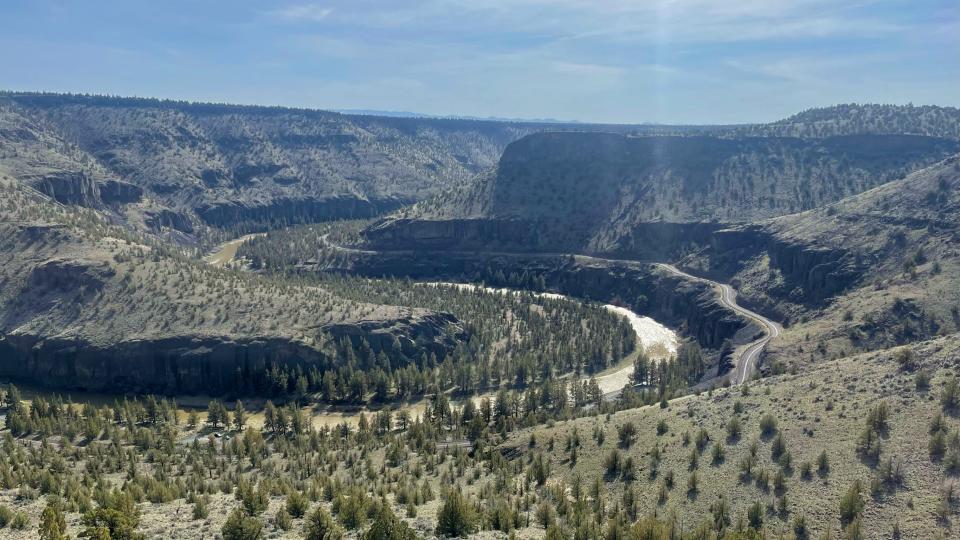
“To add to that accessibility, it has that road that comes up from Prineville or down from Alfalfa across the dam, and the road is down in the canyon and it puts you right next to the river and you can park in 50 different spots and walk the bank from there,” Perin said.
Highway 27 begins in Prineville and follows the east bank Crooked River to the Prineville reservoir. The road offers stellar river access at several pull-offs, day use areas and campgrounds throughout the 7.5-mile Wild and Scenic Area between Prineville and the Bowman Dam.
Public access coincides with the river’s highest concentrations of fish. The dam releases cold water from the bottom of Prineville reservoir and into the stream below, making the tailwater stretch some of the most suitable area for native trout and whitefish on the river. To Perin, this poses an interesting contradiction.
“We've got to remember, it’s a river out in the middle of the desert,” Perin said. “In a way it’s a natural river, but it’s been enhanced by the fact that there is this deep reservoir above it, so we’ve got this cold water that’s flushing through this desert canyon and creating this amazing fishing opportunity that’s not really natural.”
How to fish the river
On the Crooked in late April, I got a lot less use out of my waders than I would’ve thought. Instead, sandals and shorts did just fine. In many of the fishing areas, a 10 to 15-yard roll cast will get your fly where it needs to be, in eddies, smooth flats or along foam lines.
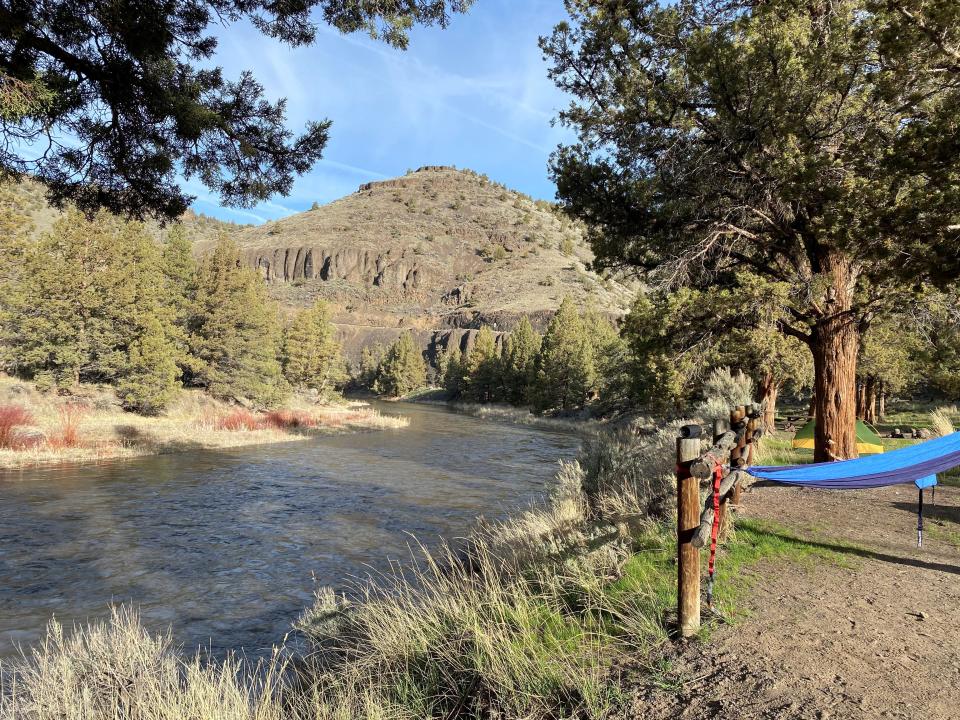
I spent most of my fishing time on the banks of the Chimney Rock Campground, where I was camping. The area is full of fish and surrounded by strikingly scenic rocky cliffs. It’s a highly fished area, with long sections of gentle ripples and foam lines that will grab the eyes of almost any fly angler traveling through, so start early to have the place to yourself.
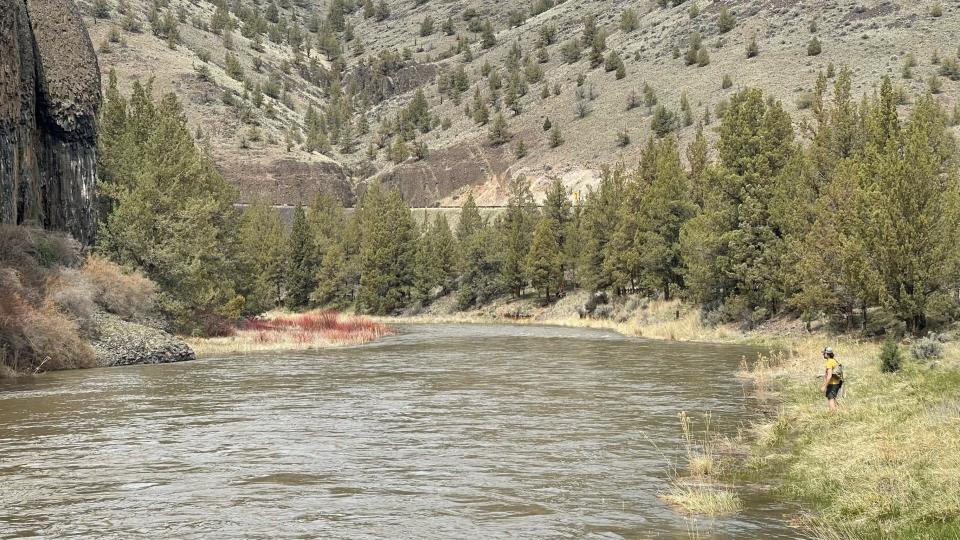
On the Crooked, I had luck using midges and rainbow warriors. Worms, scuds and leeches can also be viable throughout the season, but that doesn’t mean the river is limited to sinking flies. Although tailwaters do not have as much insect diversity as freestone streams, certain surface hatches like blue-winged olive, pale morning duns, and Mother’s Day caddis can be important at select times. If you can match the hatch, you’ll be rewarded with redbands dancing on the end of your line.
More: Whitefish: This Oregon 'trash' fish is ecologically important and downright delicious
Challenges to the ecosystem
As I perused Perin’s fly shop in Sisters, I talked with another angler. Selecting flies, we asked one another where we were headed and what we were after. When I told him I was headed to the Crooked, he appeared almost sad, replying with something to the effect of: “Great fishery, but they are really strapped for water.”
He wasn’t wrong. According to the U.S. Drought Monitor, the entire Crooked River watershed is in drought, with severity throughout ranging from moderate to severe. According to a 2022 ODFW survey, temperatures in the Crooked immediately below Bowman Dam reached 70 degrees in late September. Twenty-four miles downriver in Prineville, water temperature exceeded 80 degrees for most of July and August.
“We’ve had so much drought, and so much waste of water,” Perin said.
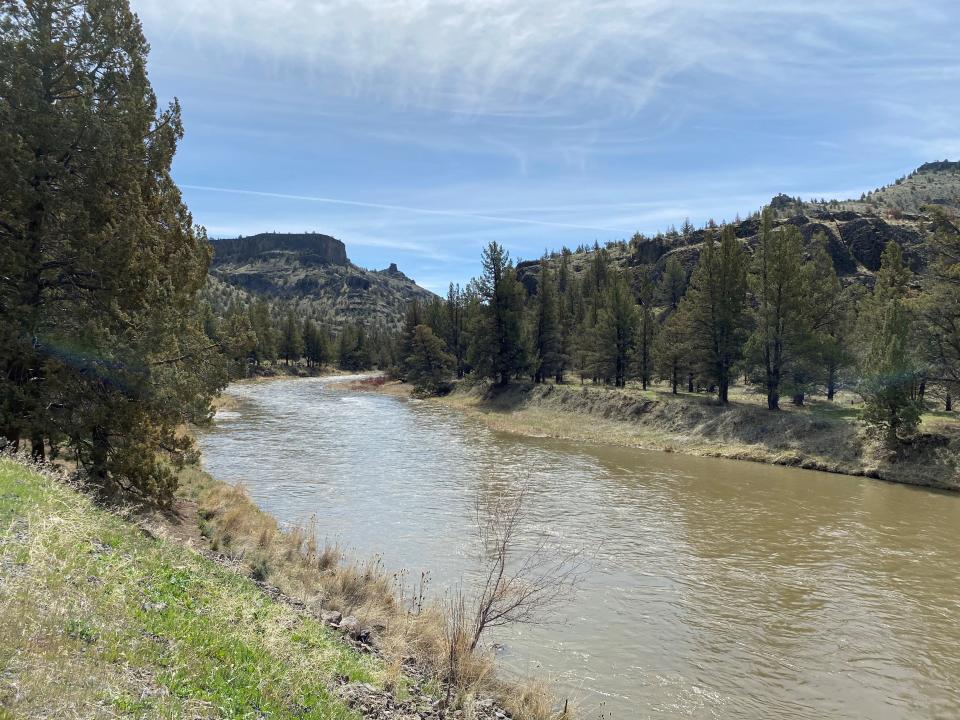
Redband trout are resilient creatures, but they’re being pushed to the brink. Low water levels and temperature increases cause numerous issues for a river ecosystem, including food chain disruptions, habitat loss and most notably, fish mortality.
Optimal temperature for trout spans between 44 and 67 degrees. While redbands are a tougher, less heat-sensitive subspecies, fly anglers should plan their trips to the Crooked accordingly and not fish when water temperatures near 70 degrees. Trout at these temperatures are already stressed and subjecting a fish to additional pressure could cause mortality. You can keep up to date with stream flows at on.doi.gov/2AkRepA, or by checking out the Fly Fisher’s Place fishing reports at bit.ly/45cqxjj.
The Crooked River is home to some of the most beautiful, resilient native fish and the most accessible, no-nonsense fly fishing available in Oregon. If you haven’t yet been, you should get out there and experience it. But please do so with caution and respect. This place is a unique and sensitive resource.
Charles Gearing is an outdoors journalism intern for the Statesman Journal. He can be reached at cgearing@gannett.com.
This article originally appeared on Salem Statesman Journal: The art of fly-fishing Central Oregon's Crooked River

